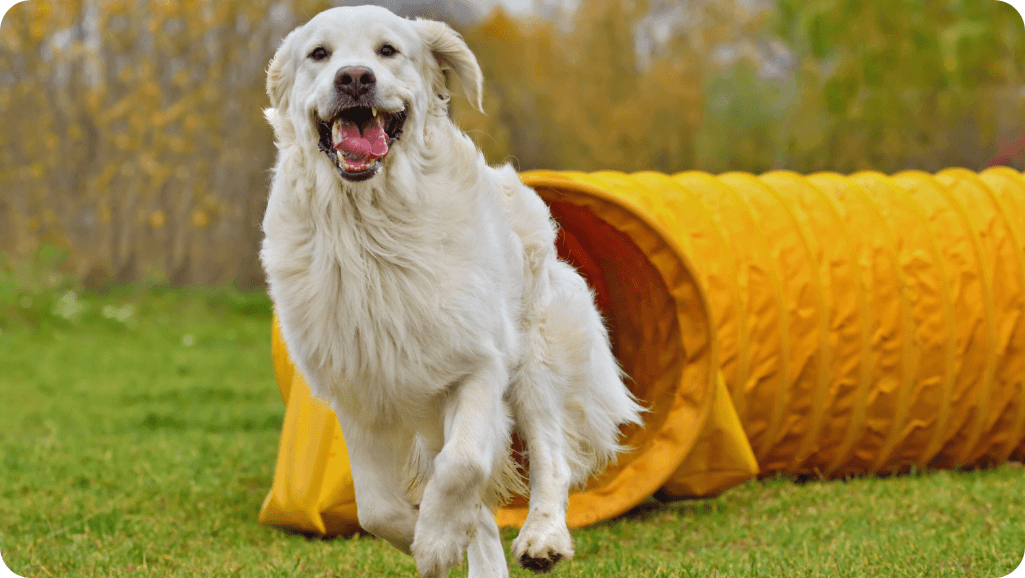Dogs are vital to our society, serving as both friends and work partners. Proper training is key for these canine companions. For pet dogs, training helps avoid behavioral issues that lead to giving them up or euthanasia. It also strengthens the bond between dogs and their owners, enhancing the joy of their companionship.
For working dogs, training is essential for their job success. It ensures they can perform their duties effectively.
Dog training methods vary, from using aversive stimuli to rewarding ones. The use of aversive methods is debated, with many experts calling for a ban. They believe these methods harm dogs’ well-being by causing fear or pain.
Key Takeaways
- Canine Behavioral Training.
- Proper dog training is essential for both companion and working dogs to promote positive behavior, successful relationships, and job performance.
- Training methods range from aversive, to mixed, to reward-based, with the use of aversive stimuli highly controversial due to concerns over compromising dog welfare.
- Reward-based training methods are increasingly recommended by veterinary and animal welfare organizations as a more humane and effective approach.
- Upcoming research aims to further evaluate the efficacy and efficiency of different training methods, including reward-based and mixed approaches.
- Seeking guidance from knowledgeable professional dog trainers is crucial for effective and ethical training practices.
Introduction to Canine Behavioral Training
Canine behavioral training is key for dog owners. It includes various methods to improve dog welfare and their bond with humans. It’s vital for all dogs, from pets to working dogs, to address behavioral issues and interact well with humans.
Importance of Proper Dog Training
Training is crucial for dog owners. It helps prevent or manage behavioral problems, which are a big reason dogs are given up or euthanized. Good training leads to better dog-human relationships and improves dog happiness. For working dogs, training is essential for their tasks.
Range of Training Methods
- Aversive methods: Using punishment or removing rewards to change dog behavior.
- Mixed methods: Using both aversive and rewarding stimuli to train dogs.
- Reward methods: Using positive reinforcement like treats and praise to encourage good behavior.
The use of aversive stimuli in dog training is debated. Many groups suggest banning methods that cause fear or pain. They say it harms the dog’s welfare and the human-dog bond.
New insights in dog psychology and learning have led to better training methods. These focus on positive reinforcement and tailor to each dog’s personality and learning style.
Positive Reinforcement Training Methods
Positive reinforcement is a great way to train dogs. It rewards good behavior instead of punishing bad ones. This method uses operant conditioning, where good actions get rewards.
Techniques like clicker training help dogs understand what’s expected. They use markers or verbal cues to show when they’ve done something right.
Principles and Techniques
For positive reinforcement to work, rewards must come right after the good behavior. This could be treats, praise, or playtime. It makes the dog want to do it again.
Being consistent with rewards is key. It helps the dog learn faster and understand what’s expected.
Benefits for Dog Welfare and Bond
Positive reinforcement is good for dogs and their owners. It doesn’t hurt the dog and builds trust. Dogs enjoy learning and feel closer to their owners.
“Positive reinforcement strengthens behavior and builds trusting relationships between pet parents and their animal companions.”
It also makes dogs eager to try new things. They get mental exercise and learn in different situations. It’s great for teaching many skills, from basic commands to service dog training.
Aversive and Mixed Training Methods
Aversive training uses unpleasant or painful stimuli to stop bad behaviors. This includes shock collars, pinch collars, or yelling. Mixed methods use both aversive and positive techniques. Critics say aversive methods harm the dog and damage the bond between dog and owner.
Use of Aversive Stimuli
Aversive training includes hitting, kicking, and using throw chains. It also includes stringing dogs up, alpha rolls, and e-collars. Shock collars are seen as effective for training from a distance. But, research warns they can make dogs aggressive and cause lasting harm.
Studies link aversive training to more dog aggression. It can also make dogs stressed and harm their well-being.
- Dogs trained with shock may act aggressively in certain situations.
- The alpha roll is outdated and risky, especially for aggressive dogs.
- Shock collars can cause fear, mental trauma, and anxiety in dogs, harming their well-being and increasing aggression.
Positive reinforcement training is as good as, or better than, aversive methods. Shock collars don’t add to training success.
Research on Efficacy and Efficiency
Many claim that reward-based and aversive/mixed training methods work equally well. However, the scientific community lacks solid evidence to support this claim. The efficacy and efficiency of these methods are still unclear. Some studies suggest reward-based methods are better for quick learning and reliable behavior. Yet, other research shows no clear difference between the methods.
Conflicting Studies on Effectiveness
More research is needed to understand the pros and cons of dog training techniques. For example, a study on e-collars found that only 14 out of 114 dogs approached sheep correctly after being shocked. On the other hand, another study showed that 39 out of 42 police dogs learned best with e-collar training.
“The scientific literature on the efficacy and efficiency of different dog training methodologies is scarce and inconsistent.”
Research on aversive training for kiwi habitat also shows mixed results. Only 12.7% of dogs showed interest in kiwi stimuli after a year of training with shocks. But, 89% of dogs avoided the stimuli after just one shock in the first session. These findings highlight the need for more thorough research to find the most effective and humane training methods.
Canine Behavioral Training: Experimental Study
To fill the gaps in current research, this study aims to explore the effectiveness and efficiency of various dog training methods. Military and police dogs will be split into two groups. One will be trained using rewards, and the other with mixed methods.
Study Design and Methodology
The study will check how fast dogs learn tasks with different training methods. It will also test how well the dogs perform the tasks they’ve learned. This detailed study will help us understand which training methods work best for working dogs.
Evaluating Efficacy and Efficiency
The study wants to see how well these tests can predict which dogs will become assistance dogs. It will use questionnaires from volunteer puppy raisers and a temperament test called the In-For-Training (IFT) test. The study focuses on Labrador and Golden retrievers, bred by Canine Companions for Independence (CCI), to analyze the results.
This study on dog training will help us understand study design for training methods and evaluation of training efficacy and efficiency for working dog training. This includes military dog training and police dog training.
“This rigorous experimental design with a focus on working dogs will provide valuable insights into the comparative benefits of reward-based and mixed training methods.”
Conclusion
The debate over dog training methods is ongoing. Both reward-based and aversive/mixed approaches have their supporters. They argue about what works best and how it affects dogs’ well-being. The current study aims to add more solid evidence to this discussion.
This research will look into how well reward-based and mixed methods work for working dogs. It will help us understand better ways to train dogs humanely. The findings will guide pet owners, trainers, and researchers in choosing the best training methods for their dogs.
Our final thoughts on dog training must consider all the data carefully. We must also remember that different dogs and owners might need different training methods. As we learn more about dogs, the field of dog training will grow. It will focus more on practices that keep our dogs happy and healthy.





















